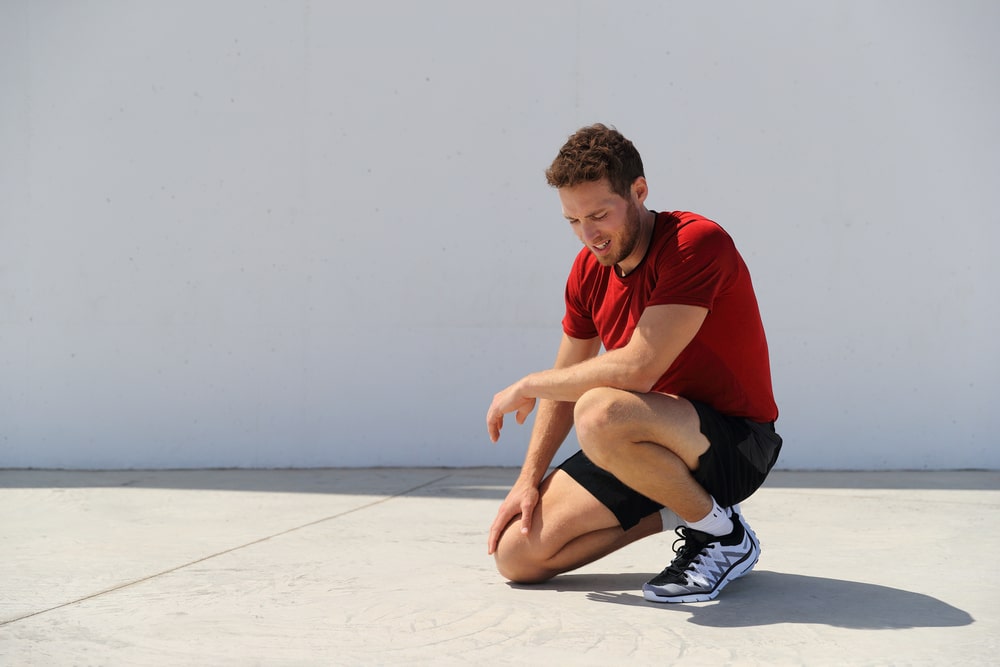
Sore Joints After Workout? 4 Methods To Help With Recovery
Whether you’re an athlete, a weekend warrior, or just someone who enjoys getting your body moving, sore joints after a workout can be a real bother. In some cases, sore joints after workouts can hinder your fitness goals and daily activities.
Understanding how to relieve sore joints after a workout can help you stay on top of your health and enjoy your active lifestyle. This article explores four things you can try if you’re experiencing sore joints after workouts.
Gentle Stretching and Flexibility Exercises
One thing to do to combat post-workout sore joints is some gentle stretching and flexibility exercises. Dynamic stretching before workout may help relieve muscle tension, increase blood flow, and enhance overall mobility.1 Stretching can also help reduce stress on your joints by improving muscle elasticity and range of motion.2 After workout, focus on static stretching to relax the muscles.3 It is always advisable to first consult your doctor or physical therapist.
Focus on stretches that target the specific areas where you feel sore. For instance, hamstring and quadricep stretches can be particularly beneficial if you feel the workout in your knees. Perform these stretches and mobility exercises regularly and you may see some improvement in how your joints feel.
Heat and Cold Therapy
Another option is to apply heat or cold to sore joints. Heat therapy helps relax and loosen tissues and may also help stimulate blood flow to the joints.4
On the other hand, cold therapy can help reduce joint inflammation and numb the sore area.5 Alternate between heat and cold treatments, depending on your joint soreness.
Not sure how to do it? Cold therapy immediately after your workout is ideal for acute soreness. Meanwhile, heat is more beneficial for ongoing stiffness that persists for a day or more.
Topical Options
Topical products, like Theraworx® for Joint Relief can also be potentially helpful for temporary relief. These products are typically applied directly to the skin and may help soothe sore joints. Follow the product’s instructions to make sure you’re using it as intended.
Proper Rest and Recovery
Lastly, never underestimate the power of proper rest and recovery. While it’s important to stay active, giving your body enough time to heal can help you avoid chronic joint problems. This includes adequate sleep, which allows your joints to recover and scheduling rest days between intense workouts.
It’s also wise to listen to your body and adjust your exercise intensity and frequency as needed. Integrate active recovery days with light activities such as walking or swimming. These activities can help maintain mobility without overstraining your joints. It is always advisable to first consult your doctor or physical therapist.
The goal is to live a life that’s active and enjoyable. If sore joints inhibit your ability to do that, these approaches may be worth trying.
This content is not medical advice and should not replace your doctor’s recommendations.
Sources:
- Jane Chertoff (2019) The Benefits of Dynamic Stretching and How to Get Started. Retrieved from https://www.healthline.com/health/exercise-fitness/dynamic-stretching
- Page, P. (2012). Current concepts in muscle stretching for exercise and rehabilitation. International Journal of Sports Physical Therapy, 7(1), 109–119. Retrieved from https://www.ncbi.nlm.nih.gov/pmc/articles/PMC3273886/
- Emily Cronkleton (2019) How and When to Include Static Stretching in Your Workout. Retrieved from https://www.healthline.com/health/exercise-fitness/static-stretching
- Malanga, G. A., Yan, N., & Stark, J. (2015). Mechanisms and efficacy of heat and cold therapies for musculoskeletal injury. Postgraduate Medicine, 127(1), 57–65. https://doi.org/10.1080/00325481.2015.992719
- Debra Fulghum (2024) Heat and Cold Therapy for Arthritis Pain. Retrieved from https://www.webmd.com/arthritis/heat-and-cold-therapy-for-arthritis-pain